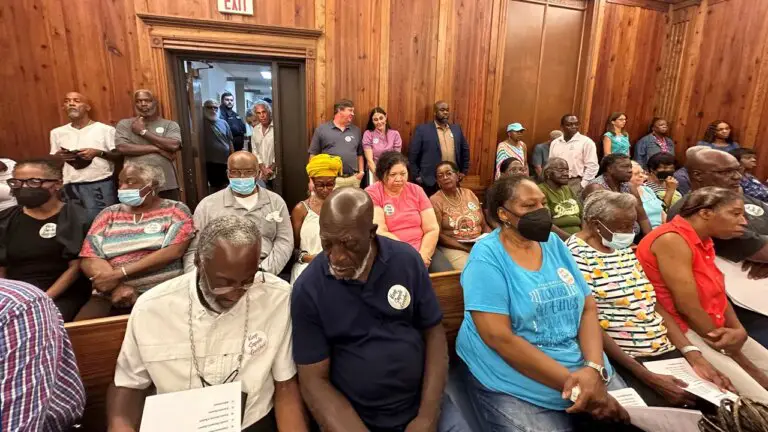Residents of Georgia’s Sapelo Island Fight to Preserve Gullah-Geechee Heritage
Descendants of enslaved people living on Georgia’s Sapelo Island are determined to continue their struggle after county commissioners voted to double the maximum allowable home size in their community. The residents, predominantly Black and of Gullah-Geechee heritage, worry that this decision may accelerate the decline of one of the few surviving Gullah-Geechee communities in the South.
The Hogg Hummock community on Sapelo Island mobilized its residents and supporters to contest zoning changes that they believe favor affluent buyers. These changes could lead to property tax increases, putting pressure on them to sell their ancestral land.
The fight for Hogg Hummock is not new. In 2012, residents successfully appealed exorbitant property tax hikes, and they spent years in federal court battling for essential services like firefighting equipment and trash collection, which were only resolved last year.
Hogg Hummock’s population has been dwindling over the years, with some families selling their land to outsiders who built vacation homes. New construction has sparked tensions over home sizes, leading commissioners to raise the maximum allowable size to 3,000 square feet from the previous 1,400 square feet of heated and air-conditioned space.
Commissioner Davis Poole, who supported this change, claimed it would allow for “modest homes that can accommodate entire families.”
Commission Chairman David Stevens attributed the changing landscape of Hogg Hummock to native owners selling their land. County officials argued that enforcing size restrictions based on heated and cooled space proved difficult and that homeowners sometimes resisted inspections.
The residents of Hogg Hummock were taken by surprise when the county proposed these zoning changes on August 16, after previously approving broader changes throughout McIntosh County in July, leaving Hogg Hummock untouched.
Commissioner Roger Lotson, the sole Black member of the county commission, voted against the changes, warning of potential legal consequences.
Two attorneys from the Southern Poverty Law Center raised concerns about the process, emphasizing “due process and equal protection concerns.”
Sapelo Island, located 60 miles south of Savannah, remains isolated from the mainland and is accessible only by boat. Since 1976, the state of Georgia has owned most of its 30 square miles of wilderness. Hogg Hummock, also known as Hog Hammock, occupies less than a square mile.
Gullah-Geechee communities, found along the Southeast coast from North Carolina to Florida, have preserved their unique African heritage since their enslaved ancestors were freed by the Civil War. These communities are known for their distinct dialect, as well as skills and crafts such as cast-net fishing and basket weaving.
In 1996, Hogg Hummock earned a spot on the National Register of Historic Places, signifying its historical significance. However, the community’s preservation now depends on the local government in McIntosh County, where 65% of the 11,100 residents are white.
The struggle to protect Hogg Hummock and its Gullah-Geechee heritage continues, with residents determined to safeguard their ancestral land and culture.

